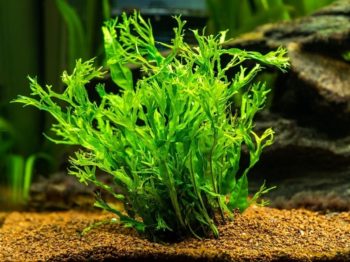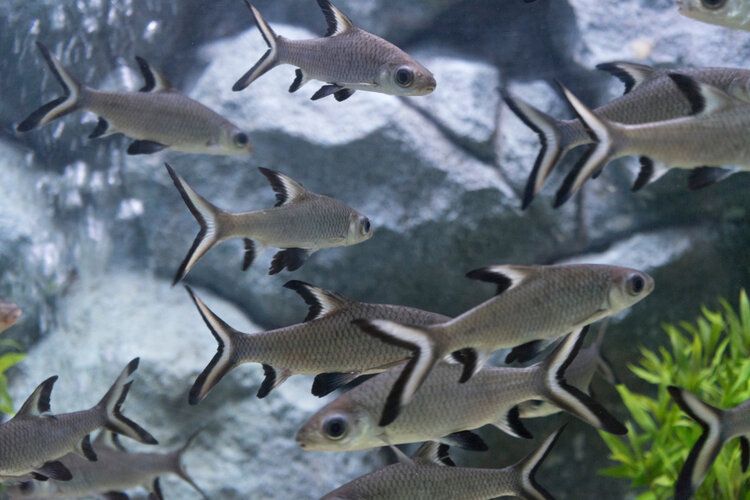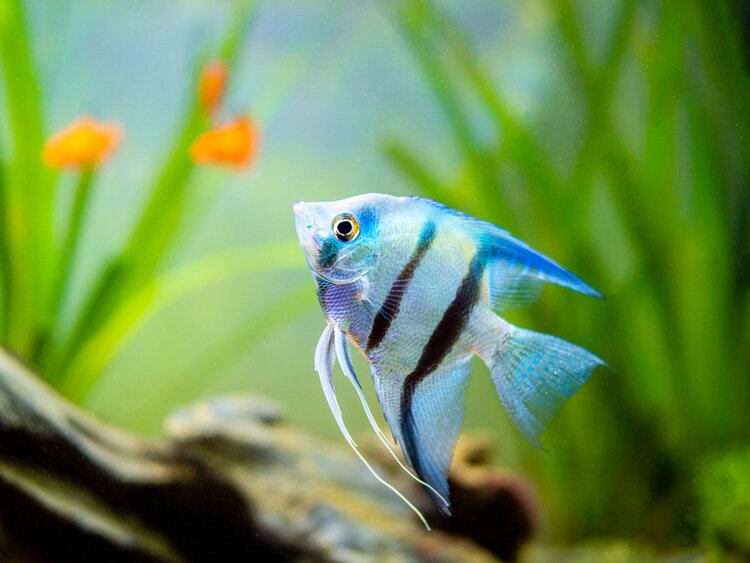Ghost Shrimp: Vet-Approved Care Guide, Pictures, Varieties & Lifespan

Updated on
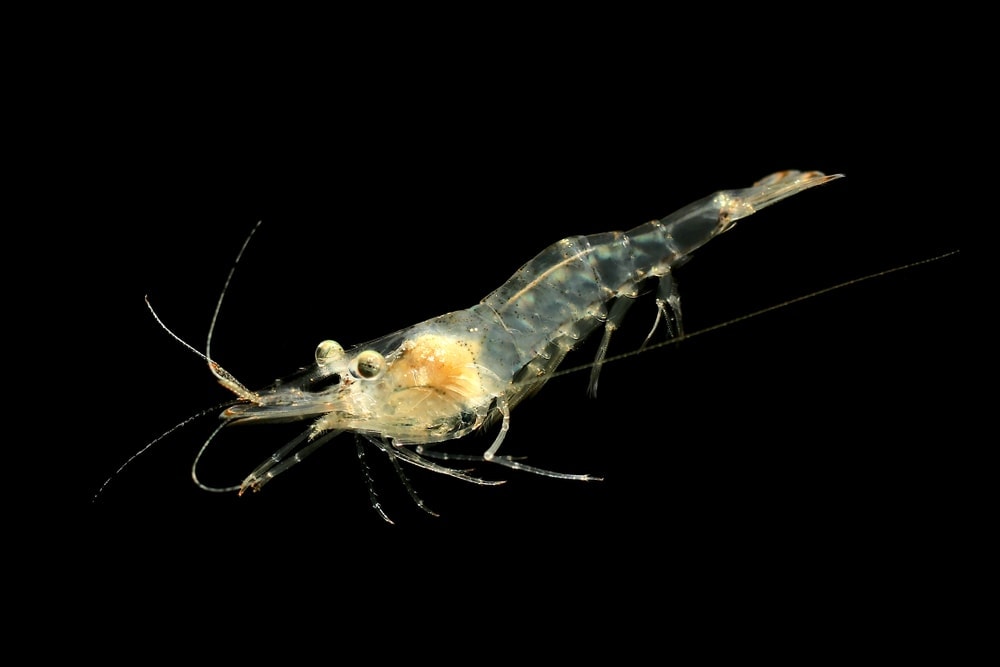
Ghost shrimp are often seen in pet stores being sold as “feeder” animals, but they are interesting and fascinating creatures in their own right. Their unusual, clear bodies make them unique, and sometimes difficult to spot in tanks. It’s fun to watch them scurrying around a tank, picking up tiny pieces of food to eat.
With the right care, these lovable creatures can live for multiple years. Here are some tips for keeping them happy and healthy!
Quick Facts About Ghost Shrimp
| Species Name: | Palaemonetes paludosus |
| Family: | Palaemonidae |
| Care Level: | Easy |
| Temperature: | 15 – 27 ˚C (59–81˚F) |
| Temperament: | Peaceful |
| Color Form: | Transparent, translucent yellow, translucent orange |
| Lifespan: | 1–3 years |
| Size: | 2.5-5 cm |
| Diet: | Omnivorous; detritus, algae, tank waste |
| Minimum Tank Size: | 5 gallons |
| Tank Set-Up: | Freshwater; lots of hiding places |
| Compatibility: | Peaceful fish, algae eaters and other herbivores |
Ghost Shrimp Overview

Ghost shrimp are unusual little creatures with high-arched backs and clear bodies. Like most dwarf shrimp, they can be fascinating to watch as they move around the tank, using their tiny front appendages to pick up shrimp-sized pieces of food and put them in their mouths. Their clear bodies mean that you can see their tiny digestive tract working as they eat.
Ghost shrimp are easy to care for and, in the right tank environment, will reproduce readily, keeping the population up. Since they are easy to care for, they are great for beginners to shrimp keeping. They do need some hardness to their tank water, which is normal for shrimp.
They are sensitive to copper, like other invertebrates, so care should be taken with medications and fertilizers, and their tank shouldn’t be filled or topped with water from a hot water tap.
These shrimp are widely available at most fish and pet stores, especially since they are often sold as feeder fish for larger, aggressive animals. Their gentle but hardworking nature makes them a great addition to many types of tanks and they are efficient tank cleaners.
How Much Do Ghost Shrimp Cost?
Since they are usually sold as feeder animals, Ghost shrimp can be extremely inexpensive to purchase. They are often sold for well under $1 per shrimp, even in big box stores. The biggest expense associated with ghost shrimp is setting up an appropriate tank environment for them. They need plenty of plants and hiding places to feel secure and happy.
Typical Behavior & Temperament
Ghost shrimp are peaceful tank inhabitants, usually minding their own business while they busily clean up the tank. Unfortunately, sometimes a similar-looking type of shrimp, Whisker shrimp, are sold under the “ghost shrimp” moniker. These shrimp can be more aggressive and have been known to kill other tank inhabitants, leading to some people believing that ghost shrimp are aggressive.
Whisker shrimp are larger than ghost shrimp, though, and the easiest way to spot the difference between the two is to look for the small orange bands that ghost shrimp have on their antennae.
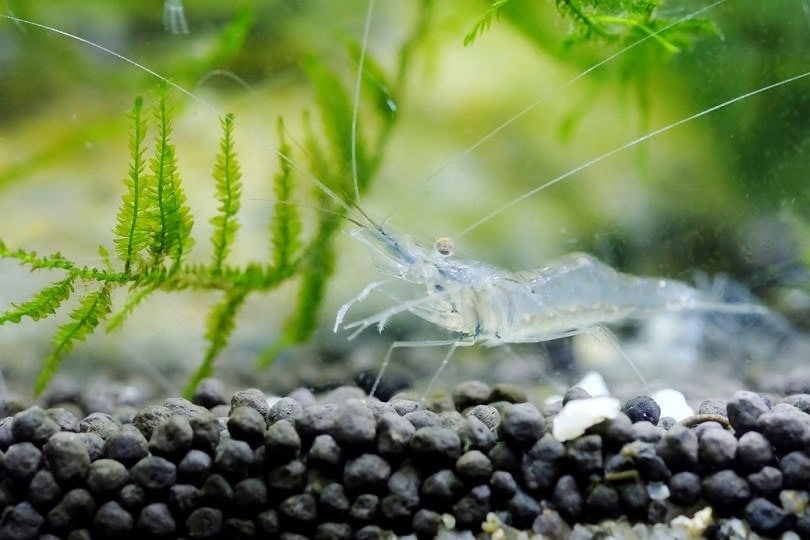
Appearance & Varieties
Ghost shrimp are freshwater dwarf shrimp with slightly pointed, arched backs. They are usually transparent, although sometimes they take on translucent light colors like yellow and light orange. They have black, brown, or tan spots on their backs but the majority of their body is transparent or translucent, allowing you to see most of their tiny organs.
They have long antennae like other dwarf shrimp. These antennae have an orange band around them that should be easy to spot once they hold still. They only reach up to 2 inches in length, and usually stay closer to 1 inch.
If your shrimp is larger than this and lacks the orange bands on the antennae, then you likely have a whisker shrimp and not a ghost shrimp.
How to Take Care of Ghost Shrimp
Tank/Aquarium Size
Ghost shrimp are very small creatures and can be kept in relatively small tanks. It’s best to give them a minimum of 5 gallons to live in, though, and many people recommend a 10-gallon tank for ghost shrimp.
Water Temperature & pH
These shrimp can thrive in a tank temperature in the 15 – 27 ˚C (59–81˚F) range, and some people have reported having luck with them happily existing slightly above or below that range. They prefer a pH of 7.0–8.0, which is a slightly smaller pH range than some of the other varieties of dwarf shrimp, like Neocaridinas.

Substrate
Ghost shrimp can live in a tank with any type of substrate, but something they can scavenge in is best, like sand or gravel. Some people use crushed coral substrate as this can help raise the pH, counteracting the pH lowering effects of items frequently added to shrimp tanks, like almond leaves and driftwood.
Plants
Ghost shrimp are happy to live in a tank that’s heavily planted, and they aren’t picky about what it’s planted with. They need plenty of hiding places and will seek refuge when frightened, after molting, and as hatchlings. Live plants help add to the detritus present in a tank, adding more food for the shrimp.

Lighting
While they don’t have a specific lighting requirement, ghost shrimp do need shady areas to hide in. This can be achieved with plants, especially floating plants, or aquarium ornaments like driftwood.
Filtration
Ghost shrimp don’t need heavy filtration, but they do need some to help populate beneficial bacteria, clean the tank, and aerate the tank. Sponge filters are a great option, especially in smaller tanks. In larger tanks, filter intakes can be covered with sponges to keep the shrimp from being sucked in.
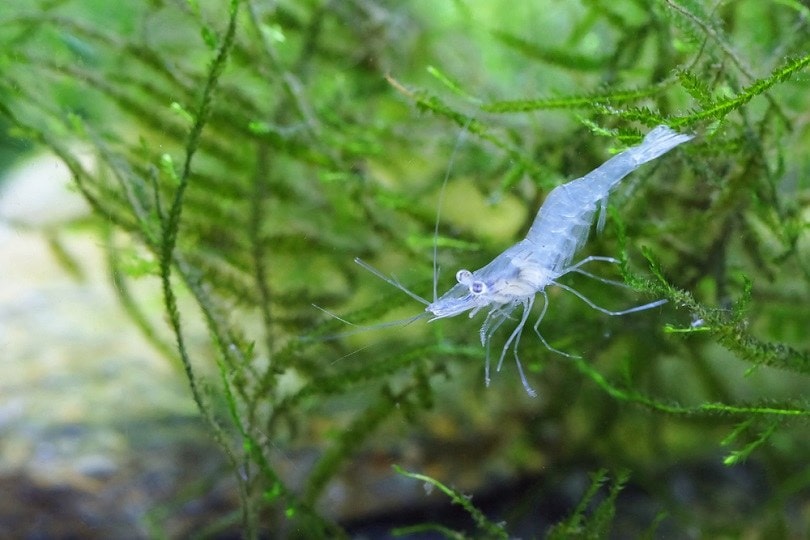
Are Ghost Shrimp Good Tank Mates?
Ghost shrimp make excellent tankmates! They are peaceful and usually keep to themselves.
Ghost shrimp are easy to introduce to community tanks as long as it is done after a quarantine period. They may hide the first few days after being introduced to the tank until they feel safe enough to come out of hiding. They will also hide after molting, meaning you may lose track of them for days at a time.
The most important thing to consider when adding ghost shrimp, or any dwarf shrimp, to your tank is if your current tank residents will try to eat the shrimp. Goldfish, cichlids, and many other fish are known for eating anything they can fit into their mouths, and many of them have a taste for shrimp.
For their safety, make sure you’re introducing your ghost shrimp into a tank with peaceful tankmates that won’t torment or try to eat them.
What to Feed Your Ghost Shrimp
Ghost shrimp are extremely easy to feed because most of the time they don’t need to be fed at all! These shrimp will pick up detritus and waste from the tank floor, and they will eat algae and biofilm from driftwood and tank surfaces. They will happily keep your tank clean for the price of some additional food on occasion.
When it comes time to feed your ghost shrimp, they will happily eat most shrimp foods offered to them. You can also feed them algae pellets, fish food, and they will even eat leftover pieces of bloodworms and other small animals you may feed to your tank residents. You can offer fresh steamed or blanched veggies, like zucchini and kale as well.
Keeping Your Ghost Shrimp Healthy
One of the biggest mistakes that people make when it comes to shrimp keeping is monitoring the GH and KH levels of the water. These monitor the hardness levels of the water, which is important to shrimp. Even experienced fish keepers may not realize their water hardness may be inappropriate for their shrimp. Low water hardness can lead to molting problems and decreased reproduction rates.
Keep a close eye on your Ghost Shrimp for signs of illness and parasites. One parasite that affects shrimp routinely is horsehair worms. Ideally, shrimp with this parasite should be humanely euthanized to prevent spread of the parasite. The good news is that horsehair worms are extremely easy to see through the clear body of ghost shrimp.
Breeding
Breeding ghost shrimp is one of the easiest things about them and is a major reason why they’re often used as feeders. If the tank environment is safe, low-stress, and has proper water parameters, then ghost shrimp will reproduce.
You will see female ghost shrimp carrying the eggs outside their bodies attached to their swimmerets. These eggs are often green or yellowish and can take days to weeks to hatch. Ghost shrimp hatch out as larvae and will continue to grow and develop over time.
Make sure the larvae are getting enough to eat and move them to a separate tank if needed to keep tank mates from eating them or their food.
Conclusion
Ghost shrimp are a fascinating addition to most aquariums. They are fun and interesting additions to the aquarium but they do require some special care. They can’t happily live in an empty tank or a tank with tank mates that attempt to chase or eat them. Take your current tank setup and inhabitants into account before bringing ghost shrimp home.
Since ghost shrimp are often raised as feeders, they may have been kept in poor conditions before coming home with you. It isn’t unusual for them to die after being introduced to a new aquarium, even with the best care. If you do experience loss of ghost shrimp, double check your parameters for safety and try again. The tendency of ghost shrimp raised as feeders to carry diseases is also why you should quarantine them for a period of at least 4 to 6 weeks before adding them to a community setup.
Once settled into a healthy, happy environment, your new ghost shrimp should thrive.
See also
- 10 Best Saltwater Aquarium Filters – Reviews & Top Picks
- 10 Best Saltwater Aquarium Test Kits – Reviews & Top Picks
Featured Image Credit: Dan Olsen, Shutterstock



